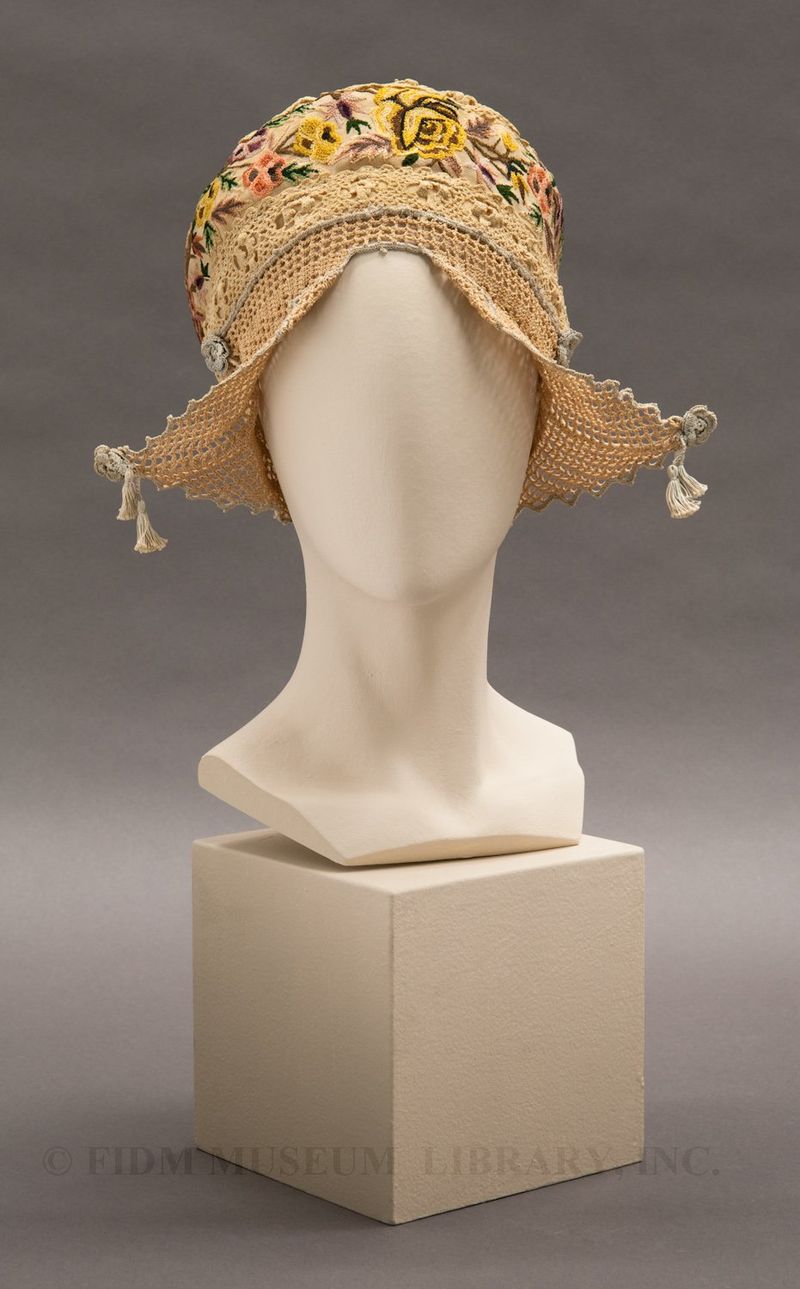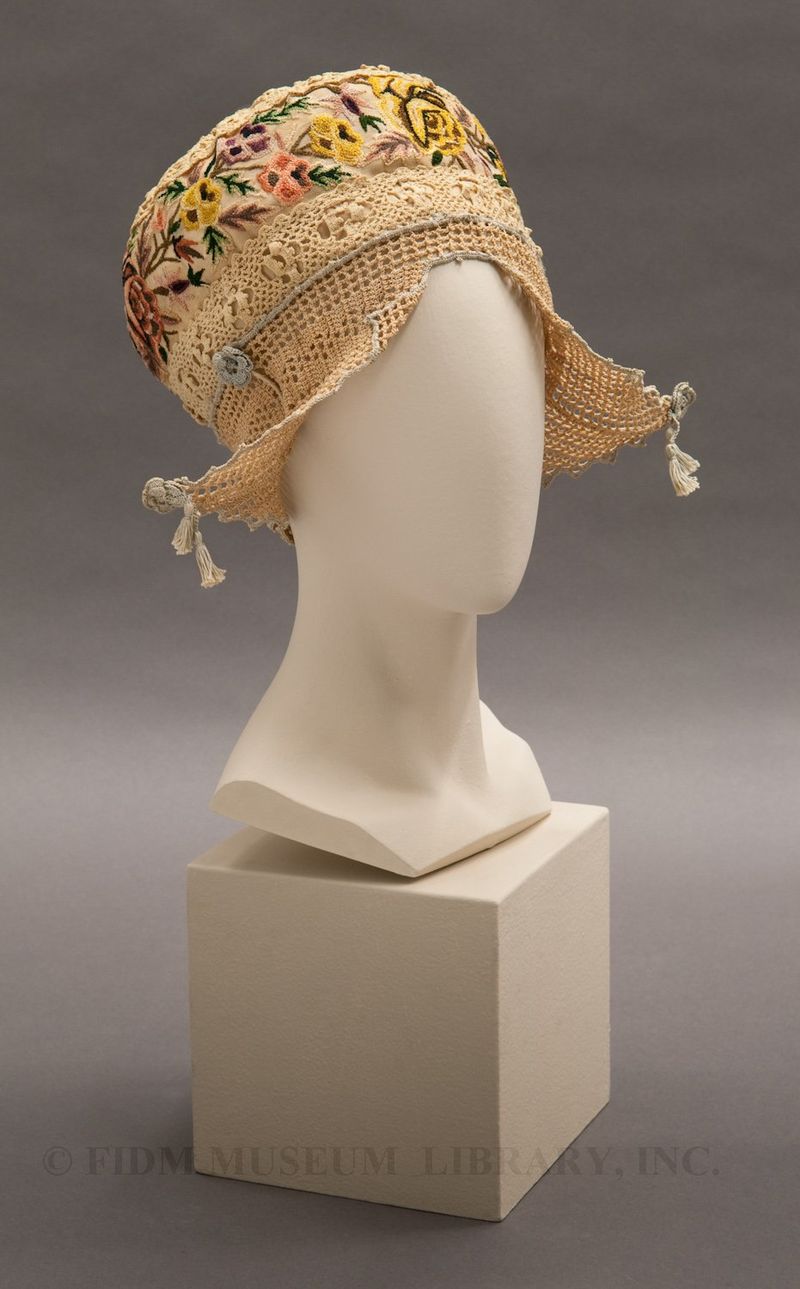Irene Castle dancing cap
Between 1911 and 1917, Irene and Vernon Castle were at the forefront of a "craze" for social dancing. Usually called "modern dance" at the time, social dance was promoted as form of healthy and enjoyable recreation. Accompanied by lively music, social dances were usually given memorable names, such as Turkey Trot, Grizzly Bear and Bunny Hug. Though some conservative thinkers considered the relatively close contact and hectic movements of social dance vulgar, the Castles insisted that "real dancing is not a series of gymnastic contortions...real dancing means graceful measures tripped out to the lilting rhythms of fine music."1 Irene and Vernon Castle promoted their refined version of social dance through appearances on stage and screen and by opening a nightclub and dancing school in New York. In 1914, the Castles authored an instruction manual titled Modern Dance. In additional to the detailed descriptions and images depicting dance steps, Irene Castle authored several chapters focusing on appropriate dancing dress for women. Included are suggestions on corset types (the Castle Corset, designed specifically for dancers), shoe types, stocking color and an injunction against over-sized "picture" hats, which are "unpleasant" for dancing.2 Though Modern Dance features several images of Irene Castle in large hats, she is also pictured wearing a small, close-fitting cap similar to the crocheted and embroidered cap pictured below.
 Castle or Dancing cap Cotton c. 1915 Museum Purchase 2004.5.7
Castle or Dancing cap Cotton c. 1915 Museum Purchase 2004.5.7
Caps of this type can be found in fashion advertisements dating from the same era. The cap is usually referred to as a Dancing or Castle cap, and is advertised as being constructed from lightweight, transparent fabrics including lace, chiffon and net with delicate trim and embellishment. The wired, stand away points are a consistent feature of the Castle cap. The Dancing cap pictured below was featured in a montage of veils, caps and hoods in the 1915 Gimbel Brothers department store catalog. It was offered in gold or silver lace, and trimmed with a spray of rosebuds.
![Castle[1]](/sites/default/files/featured_images/img_60308ab2ee3f4.jpg)
From Gimbel's Illustrated 1915 Fashion Catalog, p. 85
The wired 'wings' are a bit of a mystery. Is the style borrowed from traditional Dutch caps? Were they used to draw attention to the face? Readers, do you have any thoughts? 1 Mr. and Mrs. Vernon Castle. Modern Dancing New York: The World Syndicate Co. 1914: 31. 2 Ibid: 147.
